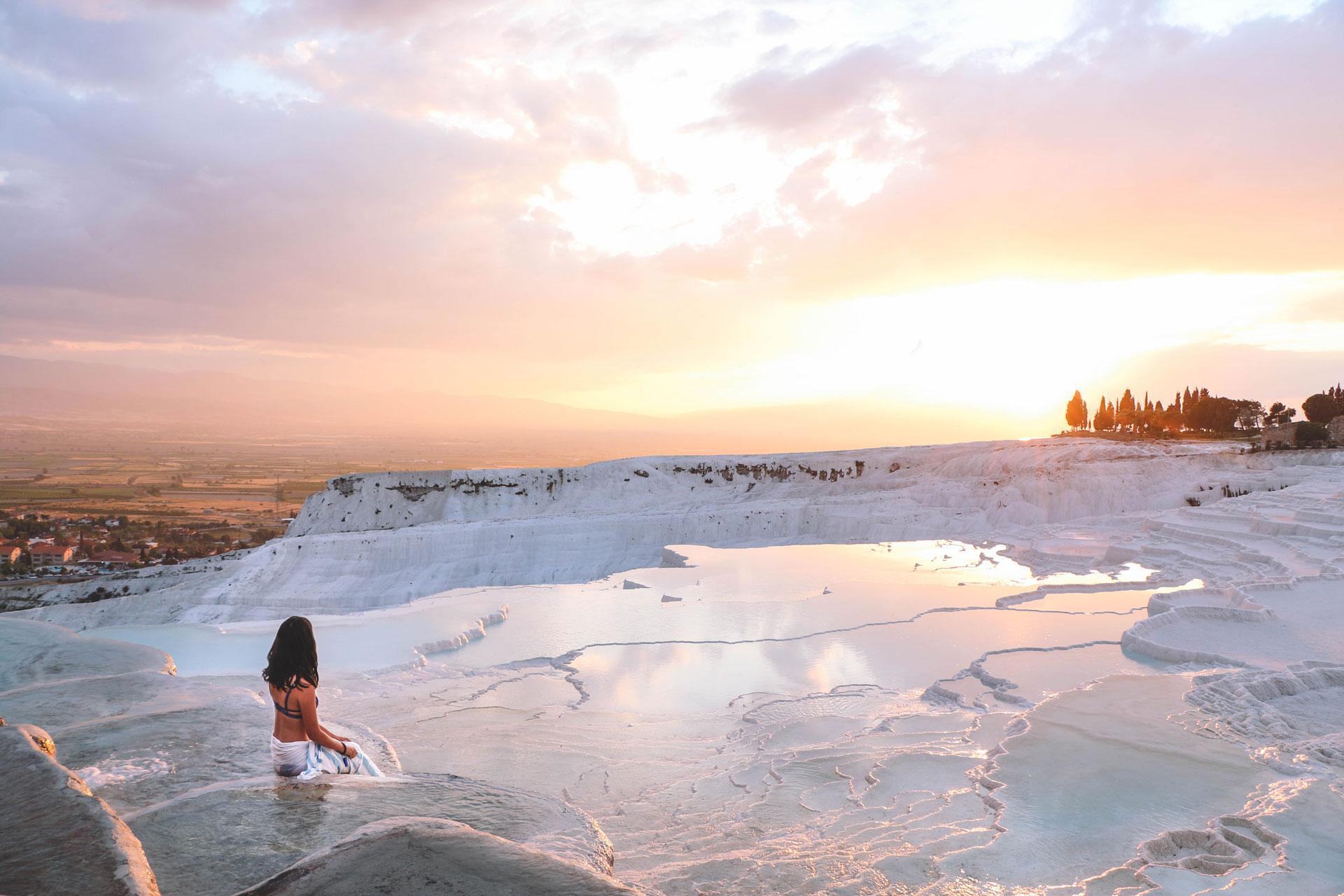
The historical region of Cappadocia, the western province of Denizli’s tourism hub Pamukkale and Mt. Nemrut, believed to have been the site of a first-century royal tomb, have been included in the world’s most important geosites (geological heritage sites) list of 200 by a U.N. body.
With the selections made by the scientific commission consisting of 24 people from around the world, among 600 applications, Cappadocia and Pamukkale were included in the list of “the world’s top 100 geological heritage sites,” while Mt. Nemrut was among the first 200.
Within the scope of the project carried out on the occasion of the 60th anniversary of the United Nations International Union of Geosciences (IUGS), the member countries notified their candidates within the framework of a quota given according to their geological diversity and area, said professor Nizamettin Kazancı, an official from UNESCO Türkiye.
Stating that he was also in the selection committee formed by 24 experts working on earth sciences and nature conservation, Kazancı said a book introducing the first 100 geosites has started to be prepared following the selections.
Noting that the results of the conference held in Spain on Oct. 25-28 were announced to the world press, Kazancı said, “These places are already known by scientists and travelers interested in this field. However, the important thing is to attract the attention of both the public and other tourists.”
“This list is not ordered from most important to least important, the numbers are given by geological categories,” he explained.
While Cappadocia was at number 65 on the list, Pamukkale was number 95, Kazancı said.
The purpose of this list is to protect and promote these places as a heritage of humanity and to pass them on to future generations, he emphasized.
Cappadocia, preserved as a UNESCO World Heritage site, is a historical region located within the borders of six Central Anatolian provinces, known for fairy chimneys, formed with sedimentary rocks and ignimbrite deposits that erupted from ancient volcanoes some three to nine million years ago.
The region is also prominent for its unique volcanic cones, valleys, underground cities, boutique hotels and houses carved into the rock, as well as its churches, chapels and shelters used by early Christians fleeing the Roman Empire.
Pamukkale, meaning “cotton castle” in Turkish, is a natural site famous for a carbonate mineral left by the flowing of thermal spring water.
Famous for its white travertines, ancient pool and the ancient city of Hierapolis, Pamukkale is on the UNESCO World Heritage List and draws hundreds of thousands of visitors annually.
Mount Nemrut is a 2,134-meter-high mountain notable for the Hierotheseion (temple-tomb and house of the gods) built by the late Hellenistic King Antiochos I of Commagene (69-34 B.C.) as a monument to himself.
Giant heads, weighing in at 6 tons are a full 10 meters tall, built in the look-out over an incredible sunrise and sunset every day. The site was added to the UNESCO World Heritage Site List in 1987.